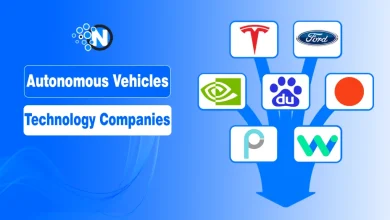The Real Tech Behind Help Desk Outsourcing

What do you think of when you picture a customer support department? If you’re like most people, you picture rows and rows of people with headsets working in cubicles and long wait times. You’d be partially right, but call centers are changing quickly thanks to new technology.
Today, support teams use AI and other tools to streamline their processes. We’ve moved beyond the age of generic scripts and endless waiting and into the age of speed and automation. This could become chaotic quickly, with customers sending thousands of messages and emails. Tech is helping us to contain the chaos.
Have you ever wondered what tools outsourcing services use?
In this post, I’ll look at what technologies top teams like SupportYourApp use. One of the leading companies providing help desk outsourcing, it has been supporting tech startups and growing businesses for over 14 years now. They use the latest tools to supplement their expertise.

It Starts With the Ticketing System
This is the control center, the place where every issue lands and gets sorted. Tools like Zendesk, Freshdesk, Jira Service Management, ServiceNow, or Zoho Desk all handle ticketing, but each has its own quirks.
A solid ticketing system doesn’t just log complaints, it:
- Assigns priorities
- Sets deadlines
- And triggers actions automatically
If you miss a due date, the system escalates the issues. If a customer uses a certain keyword in their message, the system tags and routes the ticket to the right department seamlessly. It can even pick up signs that a customer is really frustrated, prioritizing those issues.
Ticketing systems operate seamlessly in the background, lightening the workload because you don’t need to manually sort the tickets.
Think of this as the central hub that all customer communication runs through. It’s a neat solution that helps support teams thrive.
Then There’s the Knowledge Base Layer
Think of this as the help desk’s brain. A good knowledge base isn’t just a backup, it’s a weapon. Users can solve problems themselves. Agents can pull up instructions or weird bug fixes without digging through old Slack threads.
The smarter systems even use AI to recommend articles. Start typing in an issue, and it’ll surface likely solutions. The more it gets used, the better it gets at guessing what you’re after, like a librarian that actually knows where everything is.
Also, it learns. If lots of people search the same phrase, that article climbs to the top. If users give it a thumbs-down, it drops. The system evolves in real time, and that means less handholding and more doing.
Remote Access Tools
Some problems just need hands on the keyboard. That’s where remote access tools come in.
Agents use tools like TeamViewer, AnyDesk, LogMeIn Rescue, Splashtop, or in bigger setups, BeyondTrust or ConnectWise Control, to jump into a user’s system and take care of business directly.
But they don’t just pop in uninvited. These platforms come with consent prompts, time-limited sessions, audit logs, and screen recordings to make sure privacy isn’t tossed out the window.
And yes, they work on phones and tablets too. Handy when someone’s working from a café on 4G and their VPN refuses to play nice.
Live Chat, Bots, and AI Triage
Nobody wants to wait on hold anymore. That’s why so many outsourced help desks have moved to live chat, either on the company website or through apps like Slack and Microsoft Teams.
Most of the time, you’ll start with a bot. It’ll ask a few things, suggest some help articles, maybe even fix the issue if it’s a common one. Still stuck? It hands you off to a human.
These bots have come a long way. They’re no longer glorified search boxes. Using natural language processing, they can understand basic problems, log them, fill out forms, and even run basic diagnostics. The success of this automation often depends on well-labeled training data, which is where a data annotation company can play a critical role. That cuts down on ticket volume and frees up real people to handle the messier stuff, the issues that need more than a script and a smile.
Unified Communications Tools
Support used to live in silos, calls over here, emails over there, and text messages floating around who-knows-where. That model’s dead.
Now, platforms like Five9, RingCentral, Intercom, and Twilio Flex pull everything, voice, chat, SMS, email, into one unified view. So an agent can take a call, send a follow-up text, and drop a knowledge base link into an email without switching systems. No copy-pasting, no “let me transfer you,” just seamless handoffs.
Better still, these systems usually tie into CRMs like Salesforce or HubSpot. So before the agent even says hello, they’ve got context: who the caller is, what they’ve asked about before, and where things were left last time. That’s how you keep support personal at scale.
Automated Escalation and Routing Engines
Here’s where things get smart. You can’t expect one person, or even a team, to handle everything. Routing engines figure out where each ticket should go based on urgency, topic, language, even the agent’s current workload.
Say a French-speaking user reports a high-priority server crash. The system flags it, tags it, and shoots it directly to the right person without wasting time.
Some platforms even analyze sentiment in messages. If someone’s clearly frustrated, it bumps their ticket up automatically. The idea is to respond faster when it matters most, without relying on someone to manually recognize the signs.
Dashboards, Reports, and SLA Monitoring
The people upstairs want data. How fast are we answering? How many tickets are still open? Where are the bottlenecks?
Help desks track it all. Most platforms come with dashboards that show everything in real-time:
- Average response time
- Time to resolution
- First-touch resolution rate
- Customer satisfaction
- Ticket volume by category
And it’s not just about numbers for bragging rights. If password resets are eating up 40% of your support volume, maybe it’s time to rethink how users log in. If ticket spikes happen every Monday morning, maybe there’s something buggy in your Sunday deployment.
The tools show you the patterns. You just have to look.
Integrations, APIs, and Custom Workflows
Nobody uses just one platform anymore. HR, payroll, CRM, timesheets, they’re all floating in different systems. A good help desk tech connects those dots.
The best platforms come with APIs or pre-built integrations so you can link them to everything else. Need to validate user credentials through Okta? No problem. Want monitoring alerts from Datadog to create tickets automatically? Easy. Ready to close a ticket once a customer signs off in DocuSign? You can make that happen.
When it all clicks, support runs smoother. No duplication, no unnecessary back-and-forth, no missed handoffs.
AI Isn’t Magic, But It’s Definitely Helping
Let’s be real. There’s a lot of noise around AI. Some of it’s overblown. But in a help desk environment? When done right, AI can be a massive time-saver.
It can tag tickets automatically, suggest responses, highlight similar past issues, even route problems to the right person based on context and phrasing. Some platforms scan for weird spikes in ticket volume or language that signals something’s breaking, so teams can act before users even know there’s a problem.
And yes, some help desks use AI to draft replies. But the smart ones still put a human in the loop before anything goes out. Because a canned “we’re sorry for the inconvenience” won’t cut it when someone’s lost access to payroll or wiped a database.
It’s the Tech and the People
You can have the best systems in the world, but if your team doesn’t know how to use them, or doesn’t care, things will fall apart. Fast.
At the same time, even a clunky platform can still get the job done if it’s in the hands of people who know what they’re doing.
But when you combine the right tools with a sharp, responsive team? That’s when help desk outsourcing stops being a service and starts becoming a competitive edge. It fades into the background. Tickets get handled. Users stay productive. And nobody has to ask, “Whatever happened to that support request?”
Because it’s already done.




